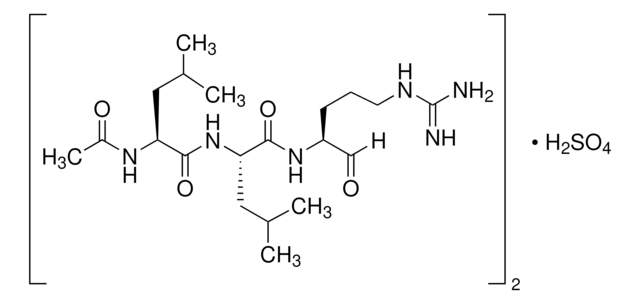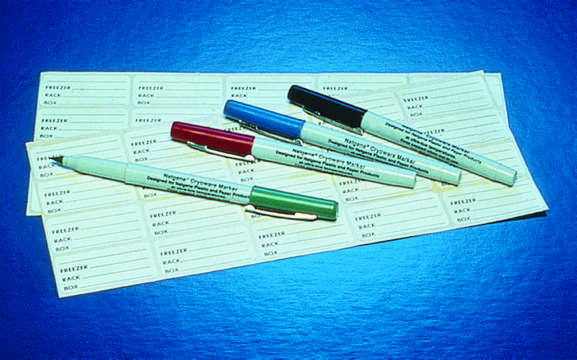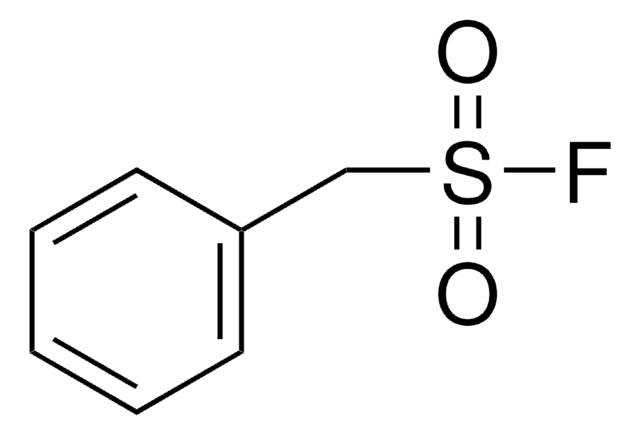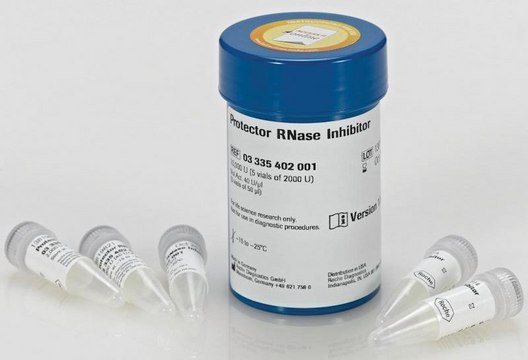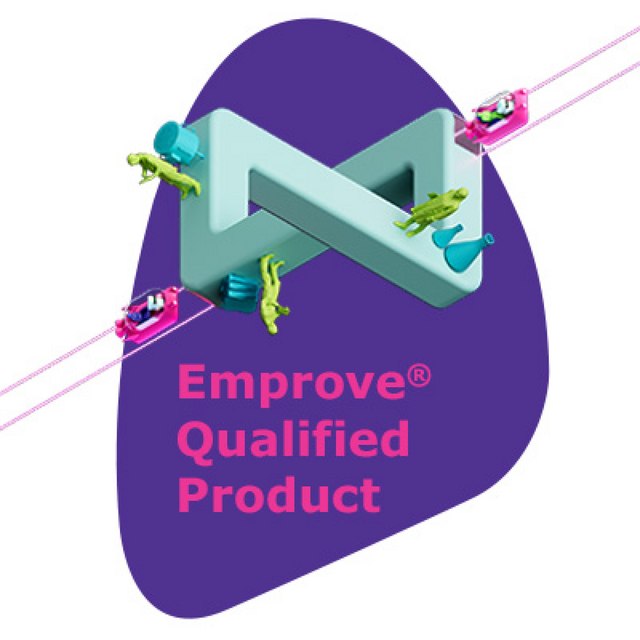MABF1991
Anti-Ly9 (CD229) Antibody, clone Ly9.7.144
purified antibody, from mouse
Sign Into View Organizational & Contract Pricing
All Photos(1)
About This Item
UNSPSC Code:
12352203
NACRES:
NA.41
Recommended Products
biological source
mouse
antibody form
purified antibody
clone
Ly9.7.144, monoclonal
mol wt
calculated mol wt 73.14 kDa
species reactivity
mouse
technique(s)
flow cytometry: suitable
immunodepletion: suitable
immunofluorescence: suitable
isotype
IgG1κ
Protein ID accession no.
UniProt accession no.
shipped in
dry ice
storage temp.
−20°C
target post-translational modification
unmodified
Specificity
Clone Ly9.7.144 detects T-lymphocyte surface antigen Ly-9 in murine cells. It targets an epitope with in the N-terminal Ig domain.
Immunogen
300.19 mouse tumor cells transfected with full-length murine Ly9 protein.
Application
Anti-Ly9 (CD229), clone Ly9.7.144, Cat. No. MABF1991, is a mouse monoclonal antibody that detects T-lymphocyte surface antigen Ly-9 and has been tested for use as an Agonist and in Flow Cytometry, Immunofluorescence, Immunodepletion.
Quality Control Testing: Evaluated by Flow Cytometry in Mouse splenocytes.
Flow Cytometry Analysis: 1μg of this antibody detected Ly9 (CD229) in one million Mouse splenocytes.
Tested Applications: Flow Cytometry Analysis: A representative lot detected Ly9 (CD229) in Flow Cytometry applications (Sintes, J., et. al. (2013). J Immunol. 190(1):21-6; Cuenca, M., et. al. (2016). J Immunol. 196(2):726-37).
Agonist Analysis: A representative lot of this antibody induced a significant decrease in the production of IL-4 in wild-type mice. (Sintes, J., et. al. (2013). J Immunol. 190(1):21-6).
Immunodepletion Analysis: A representative lot of this antibody selectively depleted splenic MZ and B1 B cells in wild-type BALB/c mice. (Cuenca, M., et. al. (2016). J Immunol. 196(2):726-37; Cuenca, M., et. al. (2018). Eur J Immunol. 48(1):99-105).
Immunofluorescence Analysis: A representative lot detected Ly9 (CD229) in Immunofluorescence applications (Cuenca, M., et. al. (2016). J Immunol. 196(2):726-37).
Quality Control Testing: Evaluated by Flow Cytometry in Mouse splenocytes.
Flow Cytometry Analysis: 1μg of this antibody detected Ly9 (CD229) in one million Mouse splenocytes.
Tested Applications: Flow Cytometry Analysis: A representative lot detected Ly9 (CD229) in Flow Cytometry applications (Sintes, J., et. al. (2013). J Immunol. 190(1):21-6; Cuenca, M., et. al. (2016). J Immunol. 196(2):726-37).
Agonist Analysis: A representative lot of this antibody induced a significant decrease in the production of IL-4 in wild-type mice. (Sintes, J., et. al. (2013). J Immunol. 190(1):21-6).
Immunodepletion Analysis: A representative lot of this antibody selectively depleted splenic MZ and B1 B cells in wild-type BALB/c mice. (Cuenca, M., et. al. (2016). J Immunol. 196(2):726-37; Cuenca, M., et. al. (2018). Eur J Immunol. 48(1):99-105).
Immunofluorescence Analysis: A representative lot detected Ly9 (CD229) in Immunofluorescence applications (Cuenca, M., et. al. (2016). J Immunol. 196(2):726-37).
Target description
T-lymphocyte surface antigen Ly-9 (UniProt: Q01965; also known as Cell surface molecule Ly-9, Lymphocyte antigen 9, SLAM family member 3, SLAMF3, Signaling lymphocytic activation molecule 3, CD229) is encoded by the Ly9 (also known as Ly-9) gene (Gene ID: 17085) in murine species. Ly-9 is a single-pass type I membrane protein that serves as a homophilic cell surface receptor present on all lymphocytes and is highly expressed on innate like lymphocytes. Its activity is controlled by presence or absence of small cytoplasmic adapter proteins, SH2D1A/SAP and/or SH2D1B/EAT-2. Ly-9 plays a negative role in the signaling pathways required for innate-like lymphocyte (iNKT) development in the thymus. It also promotes T-cell differentiation into a helper T-cell Th17 phenotype leading to increased IL-17 secretion. Ly-9 is synthesized with a signal peptide (aa 1-47) that is cleaved off in the mature form. The mature form has an extracellular domain (aa 48-453), a short transmembrane domain (aa 454-474), and a cytoplasmic domain (aa 475-654). The extracellular domain contains two Ig-like V type (aa 48-158 and 250-362) and two Ig-like C type (aa 159-243 and 353-453) domains. In addition, LY-9 has two immunoreceptor tyrosine-based switch motifs (ITSM) motifs (aa 599-604 and 623-628), which mediate the interaction with the SH2 domain of SH2D1A and SH2D1B. Ly-9 deficient mice are reported to develop normally, but exhibit a significant difference in the distribution of thymocyte subsets compared to wild types. This antibody (clone Ly9.7.144) is shown to reduce the number of iNKT cells in the spleen and also reduce the absolute number of both NKT1 and NKT2 cells. (Ref.: Sintes, J., et al. (2013). J. Immunol. 190(1); 21-25; Cuenca, M et al., (2018). Eur. J. Immunol. 48(1); 99 105).
Physical form
Purified mouse monoclonal antibody IgG1 in PBS without azide.
Storage and Stability
Stable for 1 year at -20°C from date of receipt. Handling Recommendations: Upon receipt and prior to removing the cap, centrifuge the vial and gently mix the solution. Aliquot into microcentrifuge tubes and store at -20°C. Avoid repeated freeze/thaw cycles, which may damage IgG and affect product performance.
Other Notes
Concentration: Please refer to the Certificate of Analysis for the lot-specific concentration.
Disclaimer
Unless otherwise stated in our catalog or other company documentation accompanying the product(s), our products are intended for research use only and are not to be used for any other purpose, which includes but is not limited to, unauthorized commercial uses, in vitro diagnostic uses, ex vivo or in vivo therapeutic uses or any type of consumption or application to humans or animals.
Regulatory Information
新产品
Certificates of Analysis (COA)
Search for Certificates of Analysis (COA) by entering the products Lot/Batch Number. Lot and Batch Numbers can be found on a product’s label following the words ‘Lot’ or ‘Batch’.
Already Own This Product?
Find documentation for the products that you have recently purchased in the Document Library.
Our team of scientists has experience in all areas of research including Life Science, Material Science, Chemical Synthesis, Chromatography, Analytical and many others.
Contact Technical Service